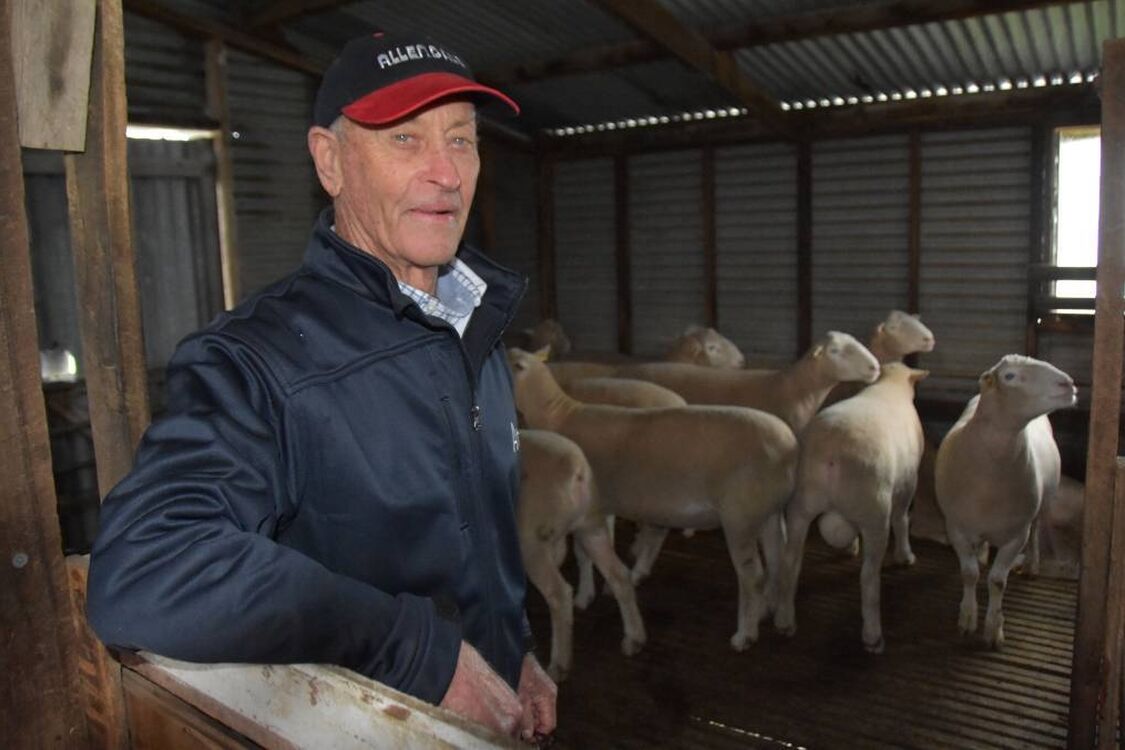Courtesy of Catherine Miller, Stock Journal
Poll Dorset stalwart Graham Day has seen many changes in his eight decades in the sheep industry but he never doubted the breed's ability to become and remain one of the nation's dominant prime lamb sires.
The Day family started breeding Poll Dorsets in 1956 and their Allendale stud at Bordertown remains one of the nation's most successful seedstock businesses.
Graham's father, the late Allen E Day, first registered a Dorset Horn stud in 1938 when the stud was based at Alma in the Lower North.
Nearly two decades later, to introduce polled genetics, the Days leased a ram for a season from Lyell Stuart, Valma stud, Whitemore, Tas.
Graham remembers the ram was used over about 50 specially selected Dorset Horn ewes at Allendale with the progeny the nucleus of their new Poll Dorset flock.
"They were a lot easier care. The Dorset Horns would get caught in fences and get on their backs and not be able to get up," he said.
"There was also the danger of handling ewes which also had horns that stuck out.
"There was also the interesting point of horns in the show ring - if the horns were not well-set or too close to the head that was it, you were out."
Graham says the breed's earliest adopters Lyell Stuart, WJ Dawkins, Jack Redden and Rex Wilson - all experienced breeders - really put the breed on the "right path", crossing Dorset Horns with Ryelands and Corriedales to breed the horns off while maintaining the Dorset type.
"The enthusiasm was fantastic among the early breeders, they could see the future the breed could have," he said.
"It gained momentum quickly, which was different to Merinos or Herefords which took a lot longer to move to polls (animals)."
By the 1970s, Graham remembers huge showings of Poll Dorsets at the Melbourne Royal Show, with up 350-400 sheep exhibited by studs from four states.
"One year in the ram under 1.5-year-old class there were 80 entries," he said.
Allendale stud rose to the top of many of these big classes, including winning grand champion ram at Melbourne in 1970 and 1972.
The big Melbourne showings continued in the 1980s.
In 1983 an Allendale ram, Aristocrat, sold for a breed world record of $27,500 at the Melbourne Show's sale - a record that held for many years.
Graham - who is an honorary life member of the Australian Poll Dorset Association - says competition from other breeds such as Texels and the introduction of White Suffolks made Poll Dorset breeders work harder to lift their quality and maintain their market share.
"For many years there were only a couple of choices and if you didn't want black points (from a Suffolk) you went with a Poll Dorset but then Texels were being imported for their yield and the White Suffolks came in," he said.
The use of New Zealand Poll Dorset genetics in AI programs in the 1980s helped clean up the points of Poll Dorsets (remove the wool from the legs) and also added length of body.
Allendale in particular used a son of a NZ bred ram, Terringle Goliath, which had a significant impact on their flock.
The next big change was the commencement of LAMBPLAN recording, which he says has becoming an important tool for all sheep breeds.
"It has helped sheep breeders breed sheep but you can't just look at the figures, you still need to look at the sheep," he said.
This year is a milestone one for Allendale with its 50th annual on-property ram sale coming up next month, October 7.
Alastair and Jayne Day, who are running the stud with some assistance from Graham, will offer 16 Poll Dorset stud rams and 114 flock rams in the auction, held in conjunction with Lachy and Lou Day, Days Whiteface studs.
Graham - who was recently honoured with an Order of Australia Medal for his services to livestock breeding - believes the Poll Dorset breed is in a strong position with those producers using Poll Dorset sires able to get plenty of weight in their lambs at a young age.
"Poll Dorset breeders have done a wonderful job producing a good meaty carcase, refined them up through the front end for lambing ease and retained that early maturity that has always been there," he said.
